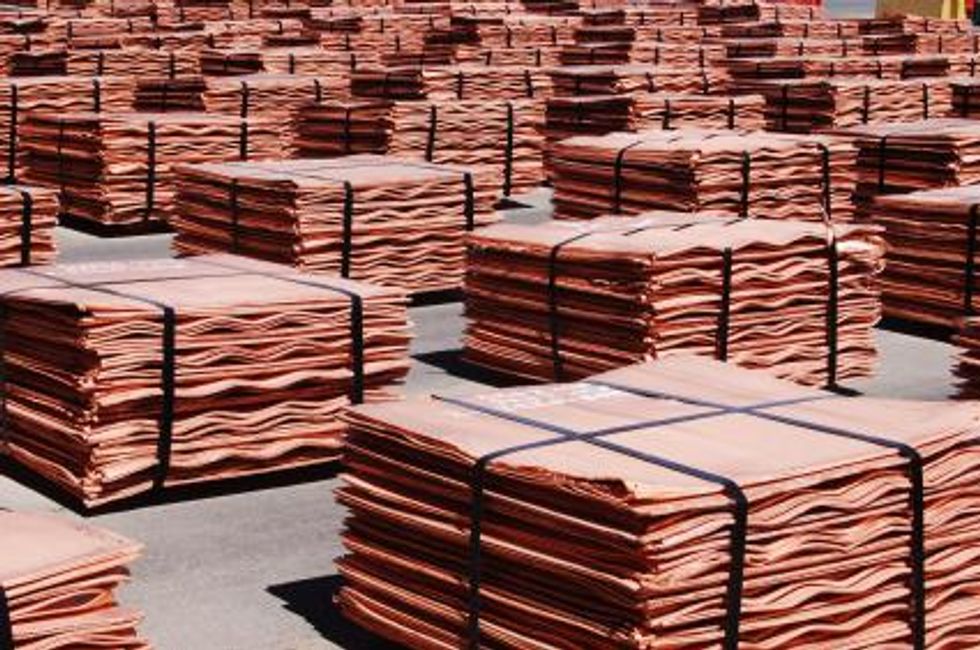- AustraliaNorth AmericaWorld
Investing News NetworkYour trusted source for investing success
- Lithium Outlook
- Oil and Gas Outlook
- Gold Outlook Report
- Uranium Outlook
- Rare Earths Outlook
- All Outlook Reports
- Top Generative AI Stocks
- Top EV Stocks
- Biggest AI Companies
- Biggest Blockchain Stocks
- Biggest Cryptocurrency-mining Stocks
- Biggest Cybersecurity Companies
- Biggest Robotics Companies
- Biggest Social Media Companies
- Biggest Technology ETFs
- Artificial Intellgience ETFs
- Robotics ETFs
- Canadian Cryptocurrency ETFs
- Artificial Intelligence Outlook
- EV Outlook
- Cleantech Outlook
- Crypto Outlook
- Tech Outlook
- All Market Outlook Reports
- Cannabis Weekly Round-Up
- Top Alzheimer's Treatment Stocks
- Top Biotech Stocks
- Top Plant-based Food Stocks
- Biggest Cannabis Stocks
- Biggest Pharma Stocks
- Longevity Stocks to Watch
- Psychedelics Stocks to Watch
- Top Cobalt Stocks
- Small Biotech ETFs to Watch
- Top Life Science ETFs
- Biggest Pharmaceutical ETFs
- Life Science Outlook
- Biotech Outlook
- Cannabis Outlook
- Pharma Outlook
- Psychedelics Outlook
- All Market Outlook Reports
The copper market may be looking at a surplus this year and the next, but with a lack of new supply coming online, the market is headed to deficit territory.
“China has accounted for over 100 percent of demand grown [for copper] over the past decade,” Lennon told Copper Investing News, adding, “up until 2010, Chinese copper demand averaged 17 percent per annum.” And while that number might have come down slightly, demand for copper from China is still a driving force behind the market.
“Even if copper demand in China grows by 4 percent on a base of 9 million tonnes, that’s 360,000 to 400,000 tonnes per year,” Lennon explained.
What about the LME?
At a glance there may not seem to be a problem with growing demand, especially for producers, as a scarcity of supply means higher prices. However, looking at the bigger picture, China has been busy scooping up as much currently available supply as it can, as is evidenced by its recent purchase of the Las Bambas project in Chile and of London Metal Exchange (LME) stockpiles.
The London Metal Exchange is one of the most transparent indicators of the copper market. Of late, investors may have noticed that stockpiles in LME warehouses have been on a steady decline.
As Stefan Ioannou, mining analyst at Haywood Securities, recently told Copper Investing News, “[e]arlier this year, we saw a lot of ‘horse trading’ as copper inventories appeared to be moving from the LME to Chinese warehouses.” In this case, it is important to recognize that with the shifting of the red metal from warehouse to warehouse, there was no actual consumption of copper.
Lennon noted that “the Chinese government is coming in and buying physical copper for their strategic stockpiles — in addition to Las Bambas, which was purchased by Chinese corporations.”
Lennon went on to state that the Chinese are reportedly looking to take delivery of 20,000 tonnes of refined copper per month in 2014 alone, which is bringing the market, along with other disruptions to supply, to a balanced position between supply and demand.
All that is to say that LME copper stockpiles are indeed getting lower. On June 20, they stood at 159,425 tonnes, which isn’t very much.
To give a little perspective, LME copper stockpiles were roughly 166,000 tonnes just a week and a half ago, which Ioannou explained “is actually less than three days’ consumption.”
Ioannou explained that the LME is down roughly 70 percent from last year. However, it is not the only exchange in a decline. It is merely the most transparent.
“Similarly, the Shanghai Metal Exchange, which was climbing earlier this year, is actually down about 56 percent over the last three months,” Ioannou said, pointing to the fact that this is due in large part to China’s tightening financial rules and skepticism spurred on from the country’s domestic bond failure in March.
Copper prices and new production
With stockpiles in major warehouses dwindling, and a surplus still conceivably in the cards for the next year or two, where does that leave copper prices?
Currently, around $6,730 per tonne or $3.05 per pound.
Depressed copper prices and weak investor sentiment aren’t driving new production. Development companies with larger deposits — which is what the market needs — need higher prices before they can move forward with their projects to fill the gap that is rapidly approaching.
As Ioannou explained, before we seen higher prices for the red metal, it is likely that the market needs to see the continued decline of inventories.
The red metal will gain some strength from economic data from China, and also from Europe, but it is his view that “copper prices will remain range bound between $3 and $3.25 per pound. For the next year and a half, pricing is probably is going to be relatively flat.”
Meanwhile, exploration and development of copper projects will continue, though until the pricing environment, global economy and investor sentiment truly improve, that development will likely be at a slower pace.
And with the lack of new supply, copper prices will be on the rise — the question is when, not if.
“[A]s the margins get squeezed, the copper price has to go up,” Ioannou said, adding, “we are already talking about a longer-term supply deficit, and this impact of lower copper prices would likely contribute to it even more.”
“These days, the median copper price is on the order of close to $1.50 a pound, and copper producers and higher-cost producers are producing at $2 to $2.50 a pound. If copper were to drop down to $2.75 or $2.50 a pound you are actually going to start knocking copper production off the map.”
And as we all know, copper production and use is integral to the global economy. So eventually things will pick up.
Securities Disclosure: I, Vivien Diniz, hold no investment interest in any of the companies mentioned.
Outlook Reports
Featured Base Metals Investing Stocks
Browse Companies
MARKETS
COMMODITIES
| Commodities | |||
|---|---|---|---|
| Gold | 2390.86 | +0.85 | |
| Silver | 28.67 | +0.01 | |
| Copper | 4.52 | +0.05 | |
| Oil | 83.24 | +0.51 | |
| Heating Oil | 2.55 | +0.01 | |
| Natural Gas | 1.76 | 0.00 | |
Investing News Network websites or approved third-party tools use cookies. Please refer to the cookie policy for collected data, privacy and GDPR compliance. By continuing to browse the site, you agree to our use of cookies.






